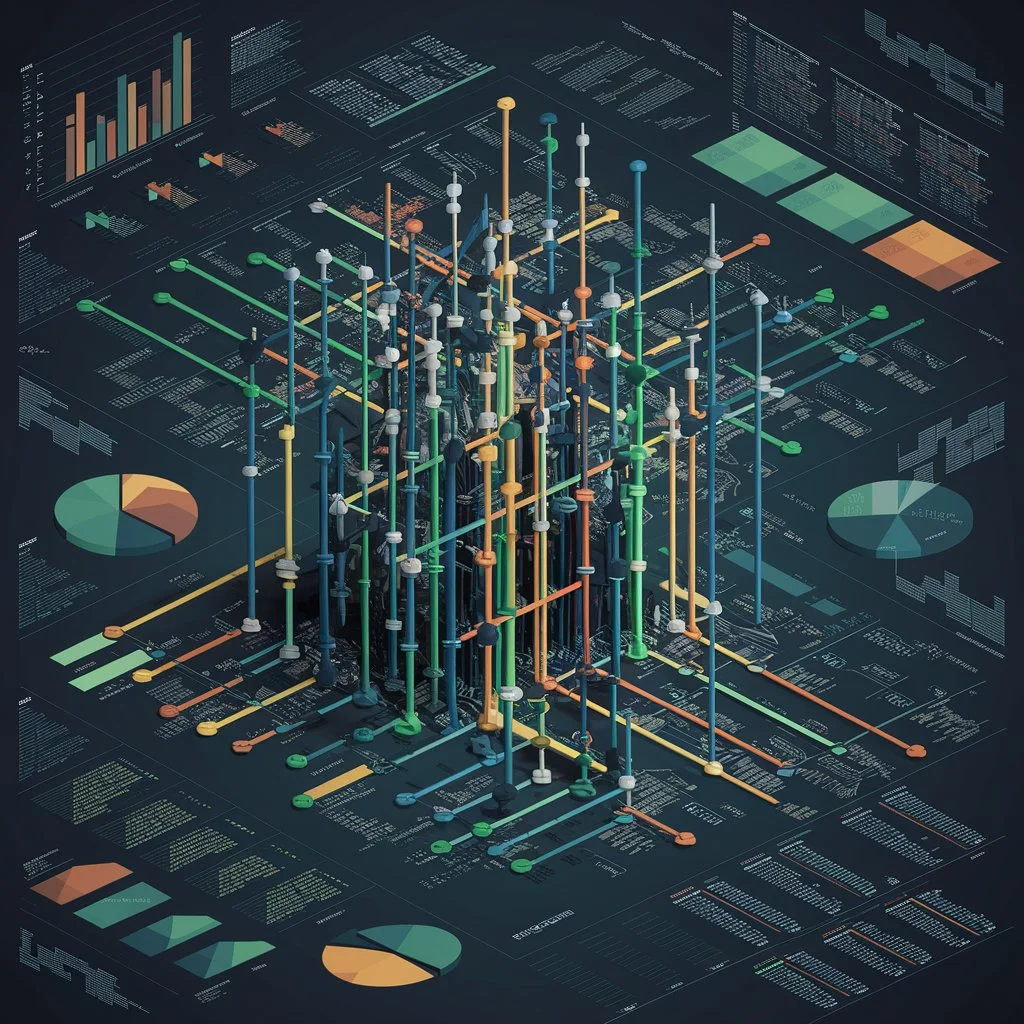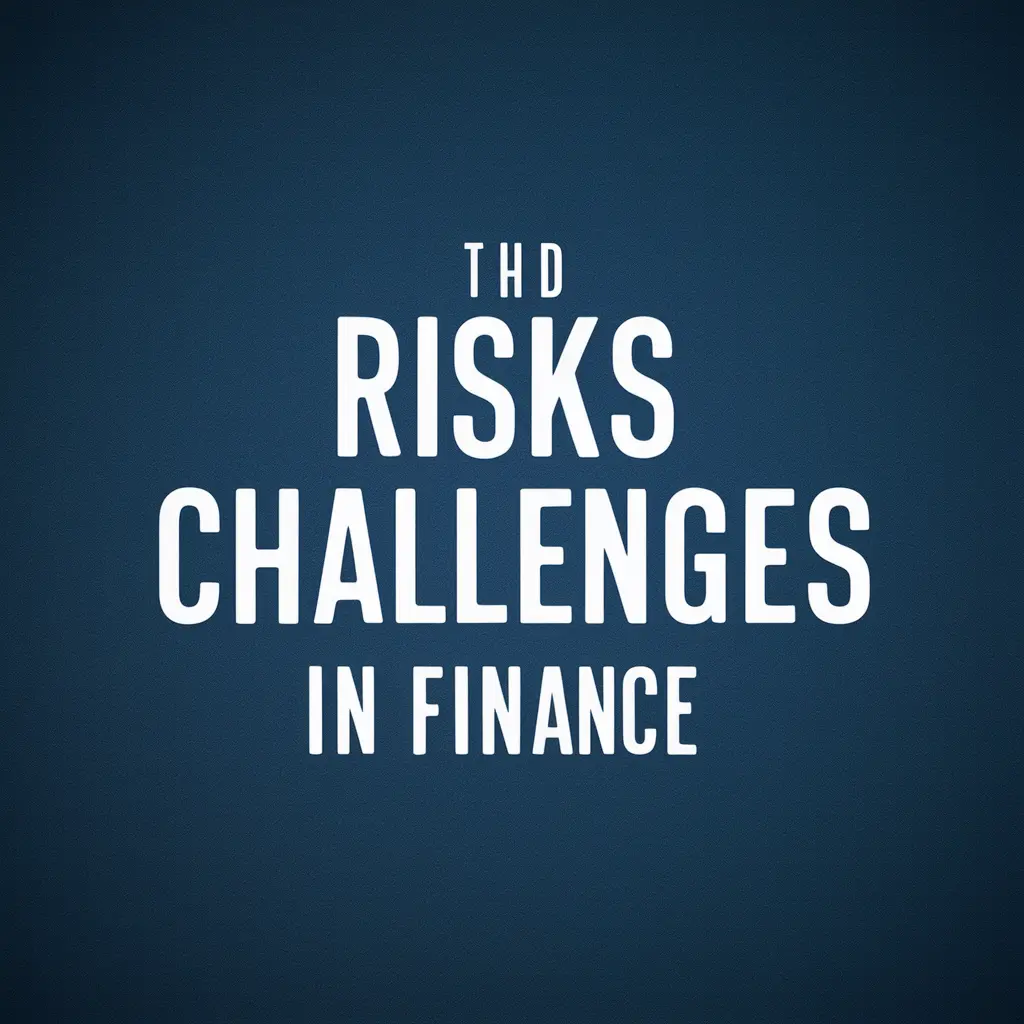Decentralized Finance (DeFi) is disrupting the traditional financial sector through adoption of blockchain technology and the use of cryptocurrencies. By utilizing distributed applications (dApps) and smart contracts, it has emerged as a transparent, open and accessible financial system. Its growth is very breathtaking, for example here is its ecosystem which is developing at a faster rate:
- Some examples of decentralized exchanges (DEXs) are Uniswap and SushiSwap.
- There are lending and borrowing platforms like Aave and Compound.
- Stablecoins such as DAI and USDC exist.
- There also exist yield farming and liquidity mining opportunities.
In this blog post, we’ll explore the growth of DeFi, its key components, use cases, risks, and the potential future developments shaping the DeFi landscape.
What is DeFi?
Blockchain technology, notably the Ethereum network supports a rapidly changing environment known as Decentralized Finance (DeFi). It takes advantage of smart contracts and cryptocurrencies to offer decentralized and transparent traditional financial services.
The core principles of DeFi are:
- Decentralization: DeFi applications are built on decentralized blockchain networks, eliminating the need for central authorities or intermediaries.
- Transparency: The transactions and activities within DeFi protocols are recorded on public blockchains, ensuring transparency and audibility.
- Accessibility: DeFi services are open and accessible to anyone with an internet connection, promoting financial inclusion.
- Composability: DeFi protocols can be combined and integrated with one another, enabling the creation of complex financial products and services.

DeFi operates without centralized institutions like banks or brokerages, which make it different from traditional finance. Instead of working through third parties, it functions by using self-executing codes known as smart contracts present in platforms such as Ethereum. These codes outline terms under which different financial services happen.
Its permissionless nature is among the most important advantage of DeFi. Centralized authorities do not need to approve before users use DeFi applications and systems. Such a democratization of finance promotes extensive financial inclusivity thus significantly improving the situation of people and communities formerly ignored by ordinary banking entities.
DeFi also enables Open Finance, providing custody and control of their assets to users, diverging from traditional finance where intermediary control and custodianship of customer assets is prevalent.
DeFi is still early but it has already given birth to a healthy ecosystem of decentralized applications (dApps) and protocols, such as decentralized exchanges, lending and borrowing platforms, stablecoins, among others that we will delve into in the subsequent section.
The Rise of DeFi

DeFi as a concept begins in 2015 when Ethereum was launched and brought smart contracts and decentralized applications to the scene (dApps). Nonetheless, the actual propellants that skyrocketed DeFi were the genesis of lendings protocols like MakerDAO and Compound respectively in 2017 and 2018.
The concept of decentralized stablecoins was introduced by MakerDAO through the creation of DAI which is a cryptocurrency that has its value tied to the US dollar. Ever since, other stablecoins like USDC and USDT have been developed to maintain stability and enhance DeFi liquidity.
However,Compound introduced a decentralized lending and borrowing mechanism that enabled clients either to earn interests on what they held or to take out loans through collateral. Consequently,there came up different ways of generating passive revenue as well as reaching capital effortlessly without using usual money market brokers.
Launch of decentralized exchanges (DEXs) such as Uniswap and SushiSwap in 2018 and 2020 saw an increased rise in DeFi. These platforms enabled trustless peer-to-peer trading of cryptocurrencies and other digital assets, thus removing the necessity of centralized order books and counterparties.
Another noteworthy DeFi advancement is yield farming and liquidity mining organizations that offer inducements for users to provide liquidity in DeFi systems by giving them cryptocurrency or a fraction of the transaction charges. These have been instrumental at wooing liquidity into different DeFi platforms thereby nurturing their expansion.
The rise of DeFi has been driven by several factors, including:
- The rising popularity of Cryptocurrencies and Blockchain technology within the mainstream.
- The need for increased financial liberty, accountability, and ease of access by DeFi Protocols.
- The probability of getting back higher returns and generating yields compared to conventional financial tools.
- DeFi applications while having user-friendly interfaces that are easy to use also provide better user experience.
With the developing and getting wiser DeFi ecosystem, it catches the eyes of the individual and group investors-retail and institutions, as well as traditional financial bodies looking for the utilization of decentralized finance’s perks.
DeFi Ecosystem

Different protocols, applications, and services fit into the LoeFi ecosystem. More so, everything remains on the Ethereum blockchain facilitating decentralized applications (dApps) and smart contracts.
Decentralized exchanges (DEXs) are one of the most noticeable components of the DeFi ecosystem. Such systems help in exchanging cryptocurrencies and other digital assets between trusted parties without the presence of middlemen. Uniswap, SushiSwap and Curve are some famous DEXs that work using automated market makers (AMMs) alongside pools to make trading easier.
The DeFi ecosystem has another essential part, which is made up of lending and borrowing platforms. The protocols of these are what permit the users to let out their cryptocurrency resources in order to earn money from interest rates while at the same time they can take loans after giving securities. When it comes to lending platforms, Aave, Compound and Maker are considered as some of the most popular ones having been involved in billions worth of transactions revolving around loaning and borrowing.
In the DeFi space, stablecoins are significant as they help sustain stability and add more liquidity. Traders, lenders and borrowers are thus able to utilize them as they are guaranteed stable assets from which they can always peg their values during trade transactions. A good example would be DAI which some other can be USD Tether (USDT) or Circle (USDC).
Yield farming and liquidity mining are groundbreaking ideas that encourage individuals to take part in decentralized financial protocols by supplying money power. An incentive given to persons staking their cash in pooling systems could either result in getting coins from the protocol itself as well as taking part in lending and borrowing operations unchained loans paid back over time with interest rates ranging from 2-5 percent annually up from four different models hinged upon them being executed correctly.
DAOs are an essential part of the DeFi ecosystem. They are community-run organizations that follow predetermined rules which are programmed into smart contracts.Diverse DeFi protocols can be led using DAOs; this facilitates decentralized decision making opportunities and also involves the public.
There are always novel ideas emerging within the expansive DeFi world today, whose growth is continuous and presents various solutions as regards decentralized asset management, insurance, derivatives and so on. It is due to this fact that complex financial products can be formed when DeFi protocols are used because they can be combined to enable different elements from the environment used.
Use Cases and Applications
The emergence of the DeFi ecosystem has opened up a variety of potential applications and use cases that may transform how we engage in finance. Some of the major DeFi use cases and applications include:

- Financial Inclusion and Banking the Unbanked: DeFi protocols are accessible to anyone with an internet connection, regardless of their geographic location or financial status. This helps promote financial inclusion by providing access to financial services for individuals and communities that have traditionally been underserved by the traditional banking system.
- Peer-to-Peer Lending and Borrowing: Platforms like Aave and Compound make it possible for people to earn interest from their digital assets or to borrow money through providing a security. Consequently, the bank would do away with the traditional financial intermidiaries and this might cut down the costs of securing a credit facility.
- Decentralized Trading and Asset Management: Decentralized exchanges (DEXs) and automated market makers (AMMs) make it possible to trade digital assets in a trustless manner without having to rely on centralized order books or intermediaries. Furthermore, decentralized asset management protocols enable users to create and maintain an investment portfolio that is clear and decentralized.
- Remittances and Cross-Border Payments: The borderless nature of blockchain and cryptocurrencies makes DeFi an attractive solution for facilitating cross-border payments and remittances. DeFi allows people to move money around the world withouth it costing so much, thereby menacing the old-fashioned remittance industry.
- Decentralized Insurance: Decentralized finance protocols are investigating decentralized insurance systems whereby funds can be pooled by individuals for which there are enforced conditions that if met would trigger payouts following a defined set of instructions found exclusively within smart contract codes. This in turn could offer an option apart from reliance on customary insurance schemes thereby potentially culminating into cheaper models that are more transparent either.
- Stablecoins and Programmable Money: DAI, USDC, and USDT are stablecoins that ensure stability and provide enough liquidity within DeFi world. By their very nature, these virtual currencies can be designed to allow different financial transactions to be undertaken including different modes of financial services hence creation of programmable money together with inventive financial assets.
- Open Finance and Composability: The integration and combination of different protocols and services are allowed by the open and composable facet of DeFi. Financial products that are both intricate and complex may thus be created using the basic structures provided by DeFi ecosystem.
With the continuing evolution of the DeFi ecosystem, it is likely that new and innovative use cases and applications will emerge which will further disrupt traditional finance thus promoting greater accessibility, transparency and financial empowerment.
- For More Information Read This Article: AI and Automation Impacting Finance Jobs
Risks and Challenges

Although the rise of DeFi promises many lucrative opportunities, it is imperative to consider the vulnerabilities and issues related to this new system:
- Security Concerns: DeFi protocols are decentralized which introduces security risks because they rely on smart contracts. In 2016 for example The DAO was hacked which led to loss of millions in stolen or compromised cryptocurrencies in 2021 e.g., Polynetwork. The security vulnerabilities of smart contracts could lead to substantial losses in technical errors or hacking scams.
- Regulatory Uncertainty and Compliance: DeFi’s regulatory environment keeps changing and there are no clear guidelines or rules in most places yet. Consequently, in some areas, adoption and growth of DeFi protocols could be held back by this regulatory uncertainty for fear that they could be dragged into court or get blocked by some laws.
- Scalability and Interoperability Issues: During times when the network is excessively entangled, Ethereum’s restricted output and exorbitant gas fees have presented scalability problems for a majority of DeFi protocols that run on it. On top of that point, the absence of compatibility among other blockchains can restrict the interoperability as well as integration of diverse ecosystems’ defi apps.
- Complexity and Usability Challenges: DeFi protocols are particularly involved in intricate technical ideas and activities like smart agreements, liquidity pools, as well as farming methods for increasing yields. In the case of mainstream growth, such complexities might prove to be a challenge while also preventing individuals who have no technical knowledge from effectively navigating through these systems.
- Volatility and Market Risks: Cryptocurrency markets have high volatility which greatly affects DeFi protocols’ stability and asset values. Also, DeFi participants worry about impermanent loss risks like price changes leading to liquidity providers’ losses in decentralized exchanges alongside pooled funds.
- Centralization Risks: Although DeFi aims to increase decentralisation, there are worries regarding probable centralisation threats in the crypto-economy. To illustrate, selected large systems or liquidity suppliers might wield substantial power or authority on some segments within this arena which could erode its integrity as being decentralised.
There are consistent efforts made to boost safety practices, set up regulatory frameworks, provide better expandable solutions and make user experiences easier in the defi system. For sustained expansion and adoption of defi, these dangers need to be handled through cooperation among programmers, policymakers, as well as other market players.
The Future of DeFi

Decentralized finance (DeFi) has seen incredible growth, and there are even more exciting possibilities for it in the future. As the ecosystem continues to mature and evolve, there are several expected trends and developments which shall be a roadmap for the future of DeFi:
- Integration with Traditional Finance: Though there was an initial goal to disrupt traditional finance by DeFi, its potential for integration and collaboration with this old system has gained significance over the years. To improve efficiency, reduce costs and enhance transparency in their operations, traditional financial institutions are looking at how to use DeFi protocols and blockchain technology.
- Adoption of DeFi by Institutions and Enterprises: If regulations are more developed and Defi thus tougher, it is probable that institutional investors and companies will start using these protocols more than before due to their stability. If this happens, then money will come flowing into the system and help it get bigger reaching a level where all services are available everywhere.
- Emergence of DeFi 2.0 and Layer 2 Scaling Solutions: Several layer 2 scaling solutions are being developed with the aim of addressing the scalability problems of Ethereum network which forms the backbone of most DeFi ecosystem. Examples of these solutions include optimistic rollups, zero-knowledge rollups, and sharding all of which are designed to make the transaction speeds faster, decrease gas fees, alongside improving the general performance of DeFi protocols.
- Regulatory Clarity and Governance Frameworks: Regulatory clarity and governance frameworks are going to be more necessary as average people continue to use DeFi. For consumer protection and trust in DeFi, collaboration among regulators, policymakers, and members of the Defi community is very important in establishing clear guidelines and standards for the industry.
- Improved User Experiences and Education: For mass adoption to occur, DeFi ecosystem ought to focus more on interfaces that are easier to use and knowledge resources. This will make it easier for many people to get involved with decentralized finance systems and start gaining from them once user experience is made simpler, while educational materials are made available thus lowering access point levels to more participants benefiting through DeFI protocols.
- Expansion of Use Cases and Cross-Chain Interoperability: With the maturation of the DeFi ecosystem, it is inevitable that more applications will be developed that go beyond lending, borrowing as well as decentralized exchanges. Interest around certain types of protocols i.e., decentralized insurance, asset management or derivatives watching is high. Moreover, moving efforts to cross-chain interoperability enhances DeFi protocols interactions making it possible for them to function on various blockchain networks effortlessly. Thus, this improves their potentiality even further.
Enormous opportunities are anticipated in DeFi, which could very well change our financial status and also our views about financial services through enhancing greater accessibility, transparency; financial empowerment at all individual group levels as its ecosystem carries on coming up with various innovations.
Conclusion
The conventional financial landscape is being restructured by decentralized finance (DeFi) whose main strengths are being built on blockchain technology-leading to a more transparent, open, and accessible economic system. Over the last decade, there has been a swift increase in the number of these systems including stablecoins or automated lending/borrowing services. This means DeFi provides new ideas related to traditional finance.
Despite its immense possibilities, when it comes to DeFi, the risks and challenges it poses are a necessary evil, among security threats as well as regulatory unknowns, scalability challenges, not to mention complexities.
In addition to regulatory clarity, greater institutional uptake of scaling solutions, as well as greater integration with traditional finance systems, will be some of the aspects of the DeFi ecosystem continuing its evolution. In the process of achieving mass adoption and tapping into the full potential of DeFi, improved user experiences and educational resources will be necessary.
In the end DeFi’s tomorrow brings a hope of an all-inclusive, open and effective financial system, which will enable individuals and societies around the world to reach out to and take part in financial services more than ever previously.

James Wilson is the insightful financial writer behind the wealth of knowledge on WealthWaves. With a keen understanding of finance and a passion for helping others navigate the complexities of money management, they specialize in crafting informative articles, practical tips, and expert advice to empower readers on their journey to financial freedom.
Join James Wilson on WealthWaves to embark on a path towards financial success and prosperity.








